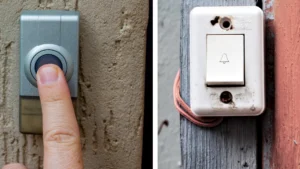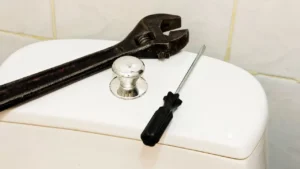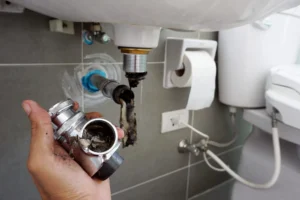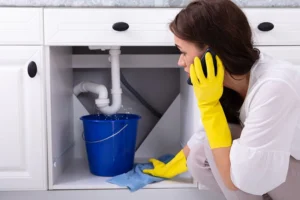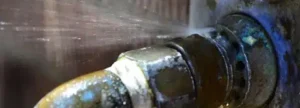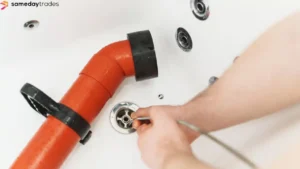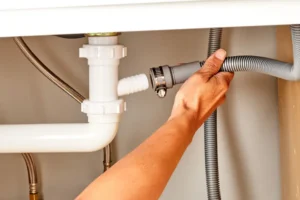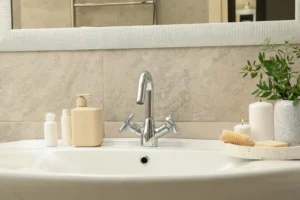A leaking tap might seem like a small inconvenience—until you hear it drip all night long or notice your water bill creeping up. Whether it’s a slow drip or a steady trickle, a leaking tap isn’t just annoying—it’s wasteful, and it can lead to bigger problems if ignored.
In this article, we’ll break down the five most common reasons your tap is leaking, what’s likely causing it, and how you can fix it. You don’t need to be a plumber to follow along, but if things get tricky, we’ll also let you know when it’s time to call in a professional.
Why Leaking Taps Shouldn’t Be Ignored
A leaking tap might not seem urgent, but it’s something that should be fixed right away. A single dripping tap can waste thousands of liters of water each year—not to mention the added cost on your utility bill. Even worse, constant leaks can cause corrosion, encourage mold growth, and lead to more serious plumbing damage over time.
Whether your tap is leaking from the spout, the handle, or even the base, the cause usually boils down to a few key issues.
1. Worn-Out Washer
Let’s start with the most common culprit: the washer.
Inside your tap is a small rubber washer that helps form a watertight seal when you turn the tap off. Over time, this washer wears out, hardens, or even cracks—especially if the tap has been over-tightened (guilty as charged, right?). When that happens, water sneaks past the washer and out of the tap, causing that familiar drip… drip… drip sound.
Signs of a Worn Washer:
- Tap leaks when off.
- Water drips from the tap spout.
- Dripping slows if you jiggle the handle (but returns later).
How to Fix It:
Replacing the washer usually fixes this issue. You’ll need to turn off the water supply, disassemble the tap, swap the washer, and reassemble.
2. Damaged or Loose Tap Spindle
The tap spindle is the part inside the tap body that connects to the handle and turns the valve on and off. If it’s damaged, loose, or misaligned, it can cause a leak even if the washer is brand new.
In older taps, especially those that get used a lot (think kitchen sink or bathroom vanity), the spindle may wear down or become stripped.
Common Signs:
- Tap leaking from handle
- Tap feels “loose” or doesn’t tighten properly.
- Water drips even after washer replacement.
How to Fix:
You may need to remove the tap and inspect the spindle. In many cases, tightening or replacing it will do the trick. If you’re unsure, this is a good time to contact a licensed plumber.
3. Corroded Valve Seat
Now we’re getting into the stuff behind the scenes.
The valve seat is where the washer seals against the tap body. Over time, mineral deposits and rust can build up on the valve seat—especially in areas with hard water. This corrosion prevents a clean seal and causes your tap to drip from the spout, even if everything else looks fine.
Symptoms:
- Tap leaking from spout
- You’ve already replaced the washer and spindle.
- Rusty or green residue visible when disassembling the tap
Fix:
You can use a valve seat grinder or reseating tool to smooth the surface. If the damage is severe, the entire tap body may need replacement.
4. Faulty O-Ring or Tap Base Seal
If your tap is leaking from the base or handle, it’s probably the O-ring that’s to blame. The O-ring is a rubber ring that seals the gap between the tap body and the handle. When it wears out, water can leak out the top or bottom of the tap.
This issue is more common in mixer taps and newer models with integrated handles.
Signs:
- Tap leaks when turned on.
- Water pools around the tap base.
- Leak seems to come from under the handle.
What to Do:
Replace the O-ring. These are usually inexpensive and available at any hardware store. Just make sure you get the right size—and remember to turn off the water before pulling the tap apart.
5. Multiple Small Issues (Or a Tap That Won’t Turn Off)
Sometimes, your tap is just… tired.
A tap that won’t stop dripping, even after repairs, may have several issues going on: a worn washer, corroded valve seat, AND a dodgy O-ring. In rare cases, the entire mechanism inside the tap body may be failing.
And if your tap won’t turn off at all, you might be dealing with a stuck valve or broken internal thread.
Warning Signs:
- Tap constantly dripping, even when tight
- Tap won’t turn off completely.
- Repeated fixes don’t work.
What Now?
At this point, it may be best to replace the tap entirely. A new tap can save water, prevent future leaks, and give your sink a fresh look.
Bonus: How to Stop a Dripping Tap Without a Washer
Some taps, like ceramic disc taps, don’t use washers. If your tap is leaking and there’s no washer inside, you might be able to stop the drip by cleaning mineral buildup, tightening loose parts, or replacing the disc cartridge.
Not sure what kind of tap you have? If it turns with just a quarter twist, it’s likely ceramic.
Keywords used: how to stop a dripping tap without a washer, how to stop a leaking tap
A Leaking Tap Should Be Repaired Immediately—Here’s Why
Still thinking about leaving that leak for later?
Here’s what can happen:
- Water waste: A single drip can waste up to 20,000 liters a year.
- Higher bills: Leaks = more usage = more cost.
- Structural damage: Leaks near walls or inside cabinets can cause wood rot, mold, and even electrical hazards.
- It only gets worse: Small issues turn into big ones quickly.
In short, fixing your leaky tap now is a lot cheaper than dealing with water damage later.
How to Fix a Leaky Tap (Step-by-Step Summary)
Here’s a quick repair summary for DIYers:
- Turn off your water supply.
- Plug your sink so you don’t lose any parts.
- Remove the tap handle and cover.
- Unscrew and pull out the spindle.
- Inspect and replace the washer, O-ring, or cartridge.
- Reassemble the tap and turn the water back on.
- Test for leaks.
When to Call a Plumber
If you’ve tried fixing your dripping tap and it still leaks—or if you’re dealing with a leaking tap in Brisbane or a leaking sink in Perth—it might be time to call in a licensed plumber.
At Same Day Trades, we offer leaking tap repairs across all suburb in Adelaide, Perth and Brisbane. Our team can handle everything from worn washers to full tap replacements—fast, clean, and stress-free.
Final Thoughts: Don’t Ignore the Drip
A tap leaking from the handle, spout, or base is more than just a minor household annoyance—it’s a warning sign that something needs fixing. By understanding the common causes and knowing how to fix a leaky tap, you can save water, lower your bills, and avoid bigger plumbing issues later on.
Whether you’re tackling it yourself or calling a pro, don’t let a drip turn into a disaster.


